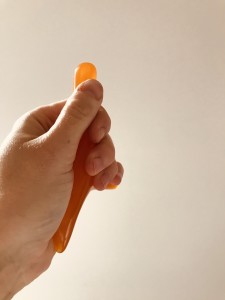 IASTM – Instrument Assisted Soft Tissue Massage – This is the new buzz word at the moment among Physiotherapists, but this is not a new treatment technique, in fact instrument assisted soft tissue mobilisation has been used for thousands of years.
IASTM – Instrument Assisted Soft Tissue Massage – This is the new buzz word at the moment among Physiotherapists, but this is not a new treatment technique, in fact instrument assisted soft tissue mobilisation has been used for thousands of years.
How does it work?
Instruments (made of Jade, bone, plastic or stainless steel) effectively break down fascial restrictions and scar tissue. The ergonomic design of these instruments provides the clinician with the ability to locate restrictions and allows the clinician to treat the affected area with the appropriate amount of pressure.
A brief history of Myofascial Tools and techniques
Gua Sha
Originated in China over 3,000 years ago and is still used today. Edged instruments made of horn or stone are used to give a deep stroking action on the skin, leading to raised wheal (petuchae). On resolution, underlying muscular tension is reduced with consequent improvements in movement.
Roman / Egyptian Myofascial Tools
The “Strigil” was an essential part of daily healthcare.
18th Century European: Admiral Henry`s (1887)
Well developed collection of Myofascial Tools.
Pacific Islands
Contemporary explorers noted pacific islanders using Lomi Myofascial Tools. Their techniques included the intriguing description of bone washing, “cleansing the skin of the bone (periosteum) causing release of memory and corresponding physical and emotional pain”.
Graston Technique
Developed in USA in 1980`s this was a cross friction technique using a set of six stainless steel tools. Research shows the benefits appear to stem from disruption of scar tissue within the tendons and connective tissues, and the subsequent inflammatory response.
ASTYM (Assisted Soft Tissue Mobilisation)
A variation of Graston using a variety of precision edged acrylic tools.
Graston-Hall Technique (SASTM)
Another instrument assisted technique developed by David Graston. Assisted Soft Tissue Mobilisation tools are made of a plastic compound which resonates during use.
Neuromuscular Technique (NMT)
Utilises “T “bars with variable shaped tips to reach deeper into soft tissues and break up fibrosis and treat trigger points.
‘Jacknobblers’
Many variable pressure aids and rollers to give easier, deeper pressure into soft tissues.
The benefits appear to be;
- Faster and easier soft tissue mobilisation.
- Deeper and longer lasting results for the patient.
- Can help protect the joints of the hand and wrist of the practitioner.
There are however downsides:
- Deep soft tissue work can be stressful to the hands and fingers.
- Can cause discoloration due to repetitive nature of scraping treatments.
- Thorough work can be tiring and time consuming and large and muscular patients exacerbate this problem.
- Tools can look intimidating for the patients.
Keep a look out for this treatment. We do use these techniques with some patients, but as with any treatment techniques should only be applied with a sound clinical rationale and with a detailed explanation to the patient.





